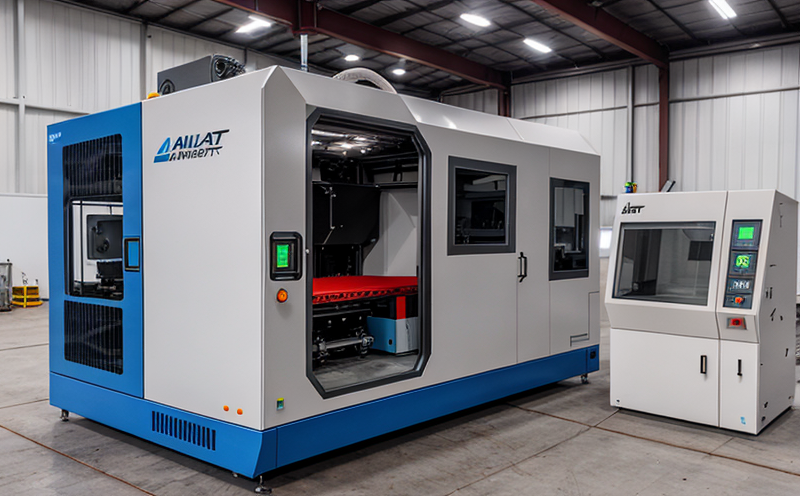ASTM F3303 Environmental Testing for Additive Manufacturing
The ASTM F3303 standard is pivotal in ensuring that additive manufacturing (AM) processes meet stringent quality and reliability requirements. This standard focuses on the environmental testing of AM processes, which encompasses a wide range of factors including temperature, humidity, pressure, and other environmental conditions that can affect the performance and durability of parts produced using AM techniques.
Environmental testing is critical for industries such as aerospace, automotive, defense, and medical devices where the quality and reliability of components are paramount. By adhering to ASTM F3303, manufacturers ensure that their products not only meet industry standards but also perform optimally under real-world conditions. The standard provides detailed guidelines on how to simulate these environmental conditions in a controlled laboratory setting.
The testing process involves subjecting AM parts to various environmental stresses such as thermal cycling, humidity exposure, and pressure changes. These tests are designed to identify any potential weaknesses or issues that could arise during the manufacturing process, thereby ensuring product reliability and safety. The results of these tests can be used to refine production processes, improve part design, and enhance overall quality control.
ASTM F3303 specifies a series of environmental conditions that should be considered when testing AM parts. These include temperature cycling from -40°C to 150°C, humidity exposure up to 98% relative humidity, and pressure variations ranging from vacuum to atmospheric pressure. The standard also requires the use of appropriate test equipment such as climate chambers, pressure vessels, and other specialized instruments capable of simulating these environmental conditions accurately.
The testing process typically involves several steps. First, the AM parts are subjected to temperature cycling in a controlled environment chamber. This step helps identify any thermal-related issues that may arise during manufacturing or use. Next, humidity exposure is conducted using a dedicated humidity chamber. Exposure to high levels of humidity can cause corrosion and degradation of materials used in AM processes. Finally, pressure variations are tested using specialized equipment designed to simulate both vacuum and atmospheric pressures.
Once the environmental testing is complete, detailed reports are generated outlining the results of each test. These reports provide valuable insights into the performance and durability of the AM parts under various environmental conditions. The data collected during these tests can be used by manufacturers to make informed decisions about process improvements and design optimizations. Additionally, compliance with ASTM F3303 ensures that products meet regulatory requirements and industry standards.
Compliance with ASTM F3303 is essential for ensuring the quality and reliability of parts produced using AM processes. By adhering to this standard, manufacturers can confidently demonstrate their commitment to producing high-quality products that meet both internal and external expectations. The testing process provides a structured approach to identifying potential issues early in the manufacturing cycle, allowing for timely corrections before parts enter production.
The benefits of complying with ASTM F3303 are numerous. These include enhanced product quality, improved customer satisfaction, increased market competitiveness, and reduced risk of failure or recall. By ensuring that AM parts meet stringent environmental requirements, manufacturers can build trust with their customers and gain a competitive edge in the global marketplace.
- Enhanced Product Quality: Environmental testing helps identify potential weaknesses in product design and manufacturing processes.
- Improved Customer Satisfaction: Products that meet rigorous standards are more likely to perform as expected, leading to higher customer satisfaction.
- Increased Market Competitiveness: Compliance with international standards like ASTM F3303 can differentiate a company from its competitors and attract new customers.
- Reduced Risk of Failure or Recall: Identifying and addressing potential issues early in the manufacturing process helps minimize the risk of product failure or recall, saving time and resources.
In conclusion, ASTM F3303 environmental testing is a crucial step in ensuring the quality and reliability of parts produced using additive manufacturing processes. By adhering to this standard, manufacturers can enhance their products' performance under real-world conditions, improve customer satisfaction, increase market competitiveness, and reduce the risk of failure or recall.





